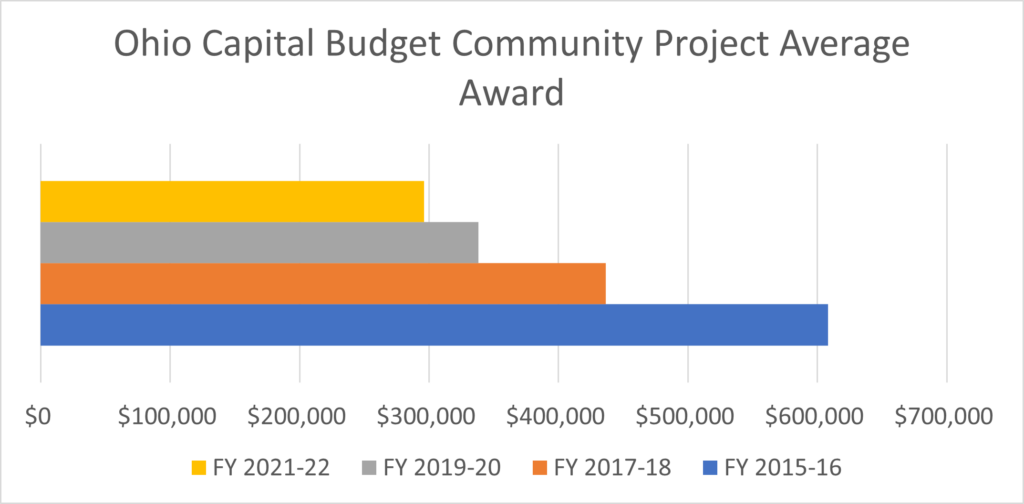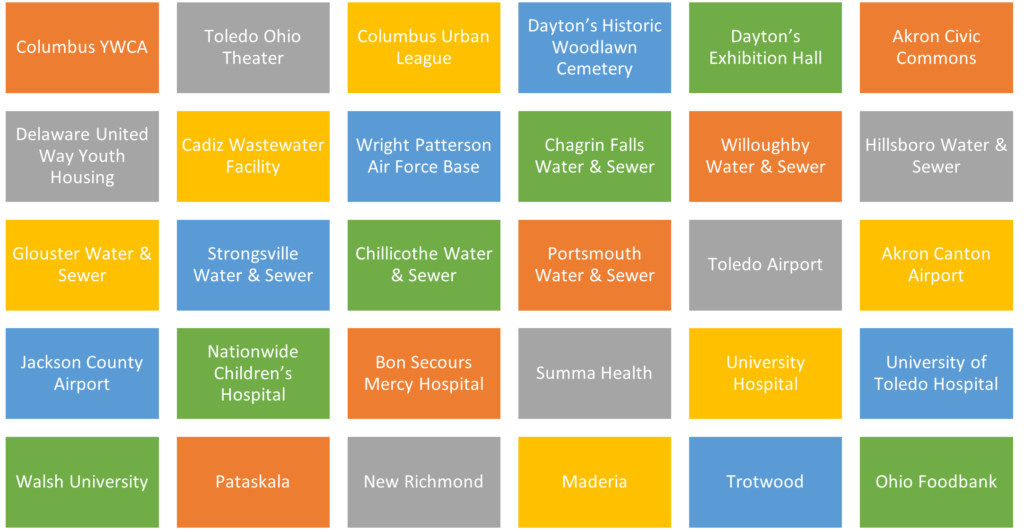Community civic projects are always searching for funding sources. Gaining funding from multiple sources is now commonplace as rarely does on pot of funding have enough money to complete transformational projects in urban or rural communities. Two civic project funding sources, the state of Ohio Capital Budget Community Project legislation and the federal budget earmark legislation, both offer critical funding for communities, health care institutions, arts groups and other not-for-profit institutions. An even better approach is to combine a lobbying approach to gain funding from these two sources through one coordinated platform.
The state of Ohio Capital Budget Community Project fund is a piece of the state of Ohio Capital Bill that is introduced and passed by the Ohio General Assembly every two years—in even number years. The Ohio Capital Budget legislation is how the state government funds state agencies, K-12 schools and state universities and community colleges capital needs but the legislation since the late 1980s has also taken a small percentage of that budget and designated for use on “community projects.” Local governments, arts and theaters, professional sports stadiums, workforce development projects, community health care projects, and parks and trails projects have all benefited from state of Ohio Capital Budget Funding. As the number of State of Ohio Capital Budget Community Projects has risen and spread to rural legislative districts, the average award has decreased over the past several years.

The Congress is close to completing the return of Federal Budget Earmarks through a transparent process that provides funding for local governments, airports, hospitals, arts and theaters and other not-for-profit institutions to fund a wide range of economic development, workforce development, community development, health care, infrastructure, and other critical community projects. Federal Budget Earmarks become controversial a decade ago, but the current Congress has reinstituted them with very different transparency rules that limit the number of earmarks and require members of Congress to publicly request the earmark and force the U.S. House Appropriation Committees to publicly list what earmarks they are including in the federal budget and who requested the funding. The U.S. House has completed their appropriation process and it include a number of federal budget earmarks that included earmarks in the following U.S. House Appropriations Subcommittees with the average earmark amount listed below:
- Criminal Justice and Science average Ohio based federal budget earmark of $659,000;
- Energy & Water average Ohio based federal budget earmark of $1,731,800;
- Interior average Ohio based federal budget earmark of $2,228,153;
- Labor, HHS average Ohio based federal budget earmark of $891,071;
- Military Construction average Ohio based federal budget earmark of $16,300,000; and
- Transportation, HUD average Ohio based federal budget earmark of $1,812,350.
Ohio Organization’s Designated for Federal Budget Earmarks by U.S. House of Representatives

The lobbying process to gain both state of Ohio Capital Bill Community Project funding and Federal Budget Earmark funding is the same—the money is awarded in different cities. An approach that can gain additional funding and create efficiencies is to launch a combined lobbying campaign funding the same project with state of Ohio Capital Budget Community Project and Federal Budget Earmark awards. Both processes demand a high-quality civic project, fund common projects, local community support and connections to local legislative leaders. This two for one approach could prove successful in doubling the funding for critical projects all across the Buckeye state.
Please contact Dave Robinson at [email protected] if you have questions or an interest in learning more about a combined lobbying approach for state of Ohio Capital Budget and Federal Budget Earmark projects.